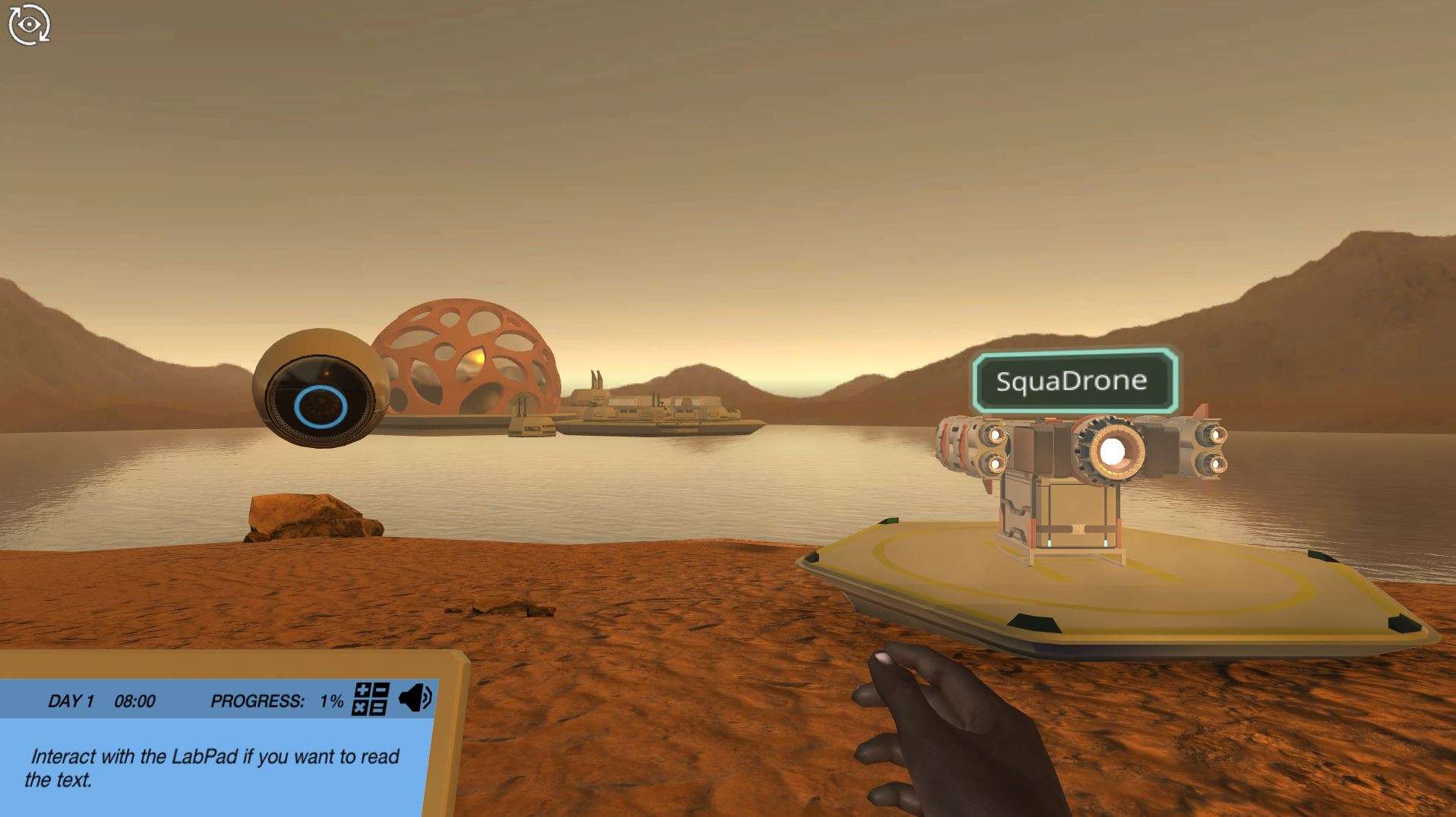Heading 1
Heading 2
Heading 3
Heading 4
Heading 5
Heading 6
Lorem ipsum dolor sit amet, consectetur adipiscing elit, sed do eiusmod tempor incididunt ut labore et dolore magna aliqua. Ut enim ad minim veniam, quis nostrud exercitation ullamco laboris nisi ut aliquip ex ea commodo consequat. Duis aute irure dolor in reprehenderit in voluptate velit esse cillum dolore eu fugiat nulla pariatur.
Block quote
Ordered list
- Item 1
- Item 2
- Item 3
Unordered list
- Item A
- Item B
- Item C
Bold text
Emphasis
Superscript
Subscript
About This Simulation
Join Dr. One at our extraterrestrial lab facility, where we’re struggling to get enough propulsion for our transporter. We need you to figure out the kinetics and optimize the chemical reaction of the fuel we’re using, so we can continue with our experiments.
Learning Objectives
- Describe the main factors that influence the rate of a chemical reaction (reactant concentration, temperature, solvent, use of catalyst), and give examples of their effect
- Assess the reaction rate of simple reactions by examining concentration data over time
- Explain the relation between temperature and reaction rate
- Describe the relation between collision theory and activation energy
- Interpret reaction energy diagrams, and relate them to energy changes during the course of a reaction
- Suggest a suitable experimental setup for measuring the kinetics of a reaction
About This Simulation
Lab Techniques
Related Standards
- HS-LS4-5
- HS-LS2-2
- Unit 8: Ecology
- Biology C.5 Population ecology
- C.4 Conservation of biodiversity
- 4.1 Species, communities and ecosystems
Learn More About This Simulation
Power up the Squadrone! In this simulation, you will learn the main factors that influence the rate of a chemical reaction, and use this knowledge to improve the output of our drone transporter’s propulsion fuel. The changed reaction affects how much heat is generated though, which can potentially overheat the drone. You will need to dive into potential energy diagrams to figure out what’s going on there.
Kinetics at the core
After meeting Dr. One at the lab facility and getting up to speed on the chemical reaction we’re working with, you will explore hands-on and optimize the key factors involved in the kinetics of the reaction. We will use the power of the rate law and the Arrhenius’ equation to really pinpoint what’s going on, and also link this to effects at the molecular level. You will be able to dynamically adjust the parameters of the reaction as you see fit, and see the direct effect on the rate of the reaction and concentration of the reactants and products.
Potential for more energy
After having optimized the reaction, you will move on to explore how the levels of potential energy for the reactants and products of the reaction affect the heat being produced, and how the use of a catalyst can affect the activation energy.
Don’t dip in the acid
Ultimately, you will need all your gathered knowledge on kinetics to get the reaction to produce enough propulsion for the transport drone. Will you be able to enable it to get across the acid lake?
For Science Programs Providing a Learning Advantage
Boost STEM Pass Rates
Boost Learning with Fun
75% of students show high engagement and improved grades with Labster
Discover Simulations That Match Your Syllabus
Easily bolster your learning objectives with relevant, interactive content
Place Students in the Shoes of Real Scientists
Practice a lab procedure or visualize theory through narrative-driven scenarios


FAQs
Find answers to frequently asked questions.
Heading 1
Heading 2
Heading 3
Heading 4
Heading 5
Heading 6
Lorem ipsum dolor sit amet, consectetur adipiscing elit, sed do eiusmod tempor incididunt ut labore et dolore magna aliqua. Ut enim ad minim veniam, quis nostrud exercitation ullamco laboris nisi ut aliquip ex ea commodo consequat. Duis aute irure dolor in reprehenderit in voluptate velit esse cillum dolore eu fugiat nulla pariatur.
Block quote
Ordered list
- Item 1
- Item 2
- Item 3
Unordered list
- Item A
- Item B
- Item C
Bold text
Emphasis
Superscript
Subscript
A Labster virtual lab is an interactive, multimedia assignment that students access right from their computers. Many Labster virtual labs prepare students for success in college by introducing foundational knowledge using multimedia visualizations that make it easier to understand complex concepts. Other Labster virtual labs prepare learners for careers in STEM labs by giving them realistic practice on lab techniques and procedures.
Labster’s virtual lab simulations are created by scientists and designed to maximize engagement and interactivity. Unlike watching a video or reading a textbook, Labster virtual labs are interactive. To make progress, students must think critically and solve a real-world problem. We believe that learning by doing makes STEM stick.
Yes, Labster is compatible with all major LMS (Learning Management Systems) including Blackboard, Canvas, D2L, Moodle, and many others. Students can access Labster like any other assignment. If your institution does not choose an LMS integration, students will log into Labster’s Course Manager once they have an account created. Your institution will decide which is the best access method.
Labster is available for purchase by instructors, faculty, and administrators at education institutions. Purchasing our starter package, Labster Explorer, can be done using a credit card if you are located in the USA, Canada, or Mexico. If you are outside of North America or are choosing a higher plan, please speak with a Labster sales representative. Compare plans.
Labster supports a wide range of STEM courses at the high school, college, and university level across fields in biology, chemistry, physics, and health sciences. You can identify topics for your courses by searching our Content Catalog.















